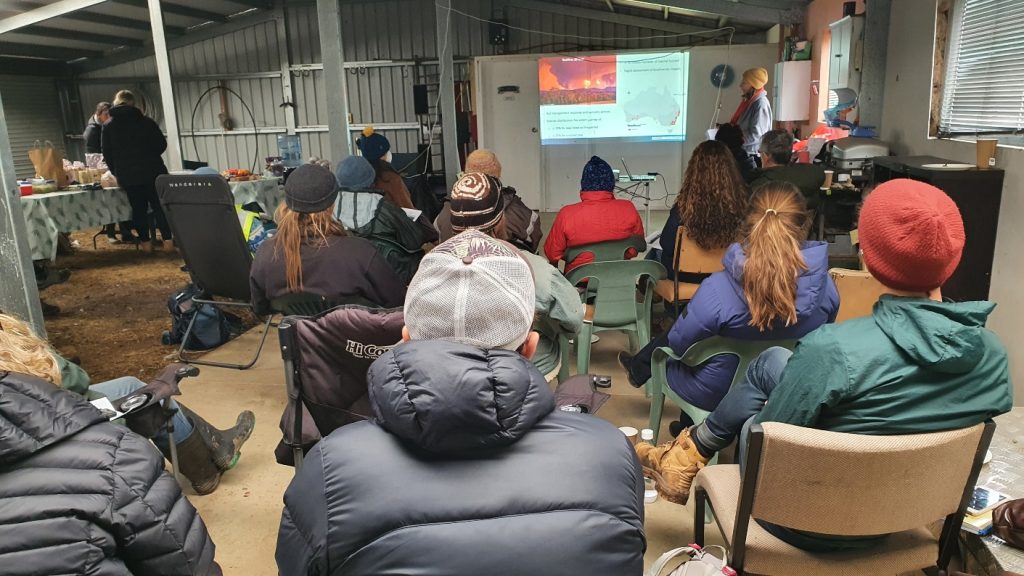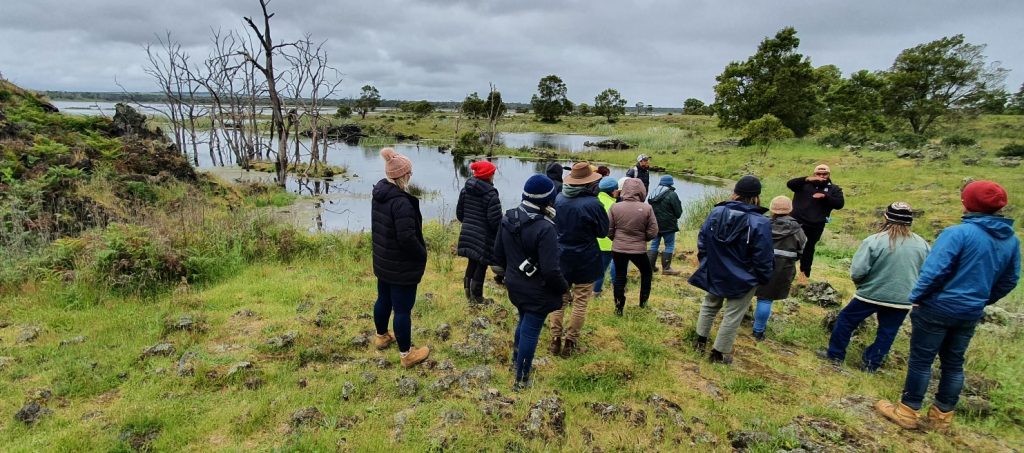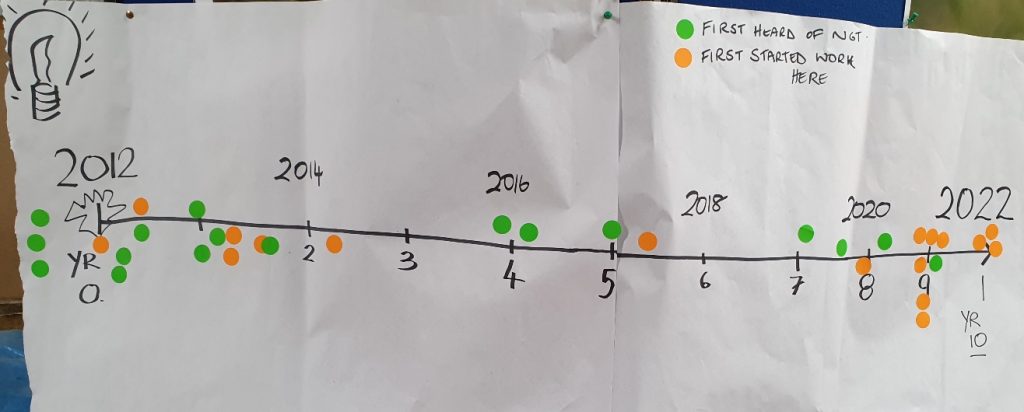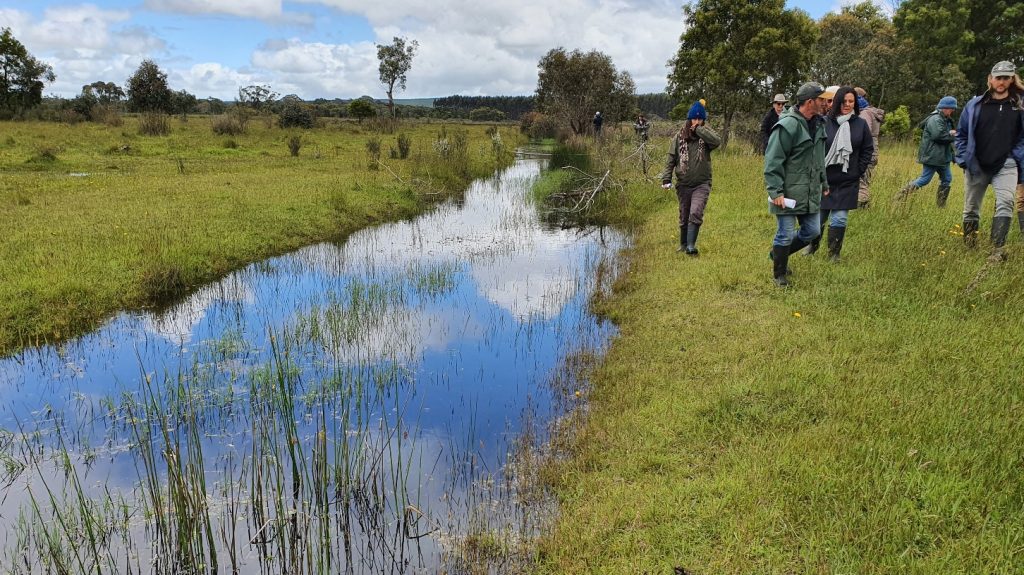Bringing the NGT team back together to close out 2022
With the pandemic causing such a major interruption to things for the past couple of years, it has been a while since we’ve been able to get the bulk of the NGT team together in person – that is, until a few weeks ago!
Although we were missing a few staff due to illness or logistical reasons due to our vast geographic spread, back in November we managed to get many of the crew together to spend two really positive days talking about recent achievements, sharing some project highlights, looking at a couple of NGT Reserves up close, and thinking strategically about the future. We also talked about the importance of protecting NGT’s culture and the outcome-focussed way we work, now the organisation is growing and evolving.
On the morning of day 1, we held the first workshop session at NGT’s Restoration Reserve at Mt Vandyke, in south-western Victoria, followed by an afternoon visit to Tae Rak (Lake Condah) near Heywood, where we were given some fascinating insights into Gunditjmara culture and the importance of this beautiful wetland to Traditional Owners.


On day 2, we gathered in the shearing shed at Mt Burr Swamp (in the South East of SA) for the rest of the workshop, where we took 5 minutes out from our other discussions to get a sense of when our staff first connected with NGT. The timeline that resulted from this exercise – as shown below – was quite interesting…

Some things I think this highlights are recent growth in our team (lots of orange dots at the end), but also the fact that most people were already familiar with NGT before they started working for us. I can also see and appreciate how fantastic it is to have a core group of staff who have been with us since the very early days. That long-term loyalty and commitment from our team, is something that makes NGT a very special and knowledgeable workplace to be part of.
While at Mt Burr Swamp, we also had a chance to look at the next stages for the restoration project at this special site, which is home to a vast number of previously drained peat wetlands that we are gradually restoring. An area that is earmarked for restoration next autumn, via the backfilling of the artificial drains (thanks to our partnership with the Limestone Coast Landscape Board), is shown below.

Of course, the centrepiece of the property is Mt Burr Swamp itself – the largest wetland on the reserve, which was restored in 2016 and is now home to recovering populations of nationally threatened fish, frogs and birds. The wetland may also provide important restored foraging habitat for the critically endangered Southern Bent-wing Bat (i.e. abundant wetland insect life = bat food!). This species, which is the 2022 Australian mammal of the year, is able to take advantage of the wetland being strategically located nearby to the Mt Burr Range which contains important roost caves.
Finally, to see a bird’s eye view of how the swamp is looking now, please press play on the video below.
This is also our chance to say thanks for your support this year, as we farewell 2022. We look forward to a positive year ahead in 2023!
